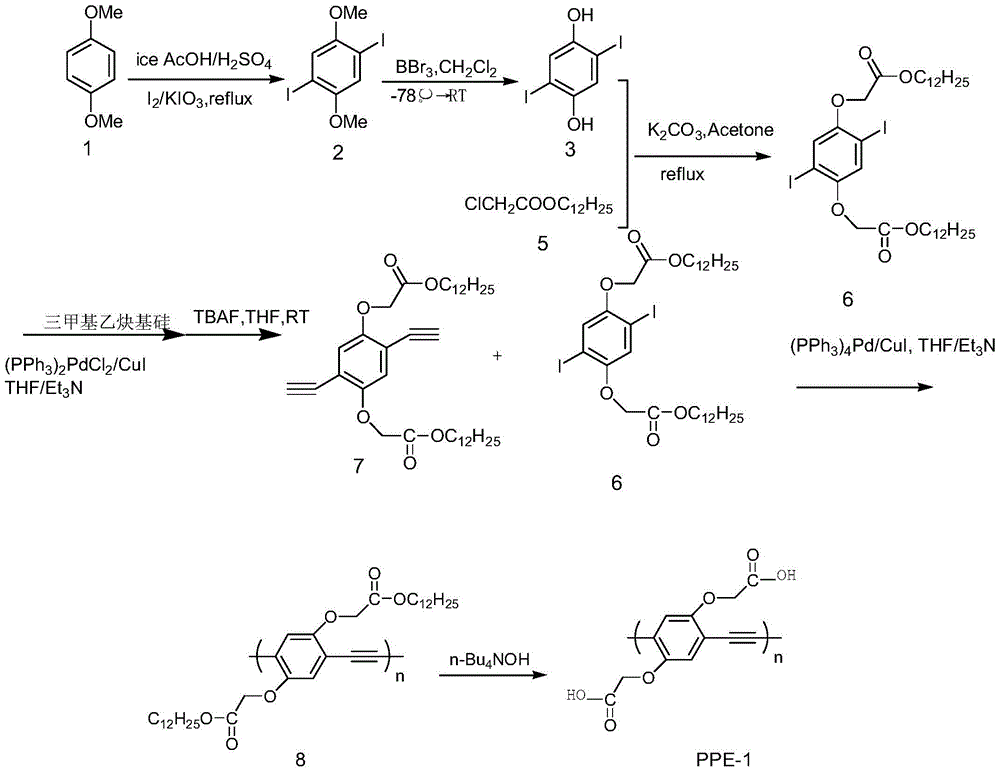A sensor array and its application in metal ion-assisted identification
A sensor array, metal ion technology, applied in the direction of fluorescence/phosphorescence, color/spectral characteristic measurement, material excitation analysis, etc., can solve the problems of time-consuming, labor-intensive and cost-intensive work
- Summary
- Abstract
- Description
- Claims
- Application Information
AI Technical Summary
Problems solved by technology
Method used
Image
Examples
Embodiment 1
[0111] Embodiment 1. Assisted identification of metal ions based on sensor array
[0112] (1) Adjust the concentrations of four kinds of conjugated polyelectrolyte aqueous solutions into light yellow visible to the naked eye, wherein the concentration of the conjugated polyelectrolyte aqueous solution shown in formula I is 565 μM, and the concentration of the conjugated polyelectrolyte aqueous solution shown in formula II is 450 μM, the formula The concentration of the conjugated polyelectrolyte aqueous solution shown in III is 266 μ M, and the concentration of the conjugated polyelectrolyte aqueous solution shown in Formula IV is 464 μ M. Add 2 mL of the four kinds of conjugated polyelectrolyte aqueous solutions to the quartz cuvette respectively. At a characteristic wavelength of 330 At -500nm place, measure their absorption spectrum with ultraviolet-visible spectrophotometer; Get described four kinds of conjugated polyelectrolyte aqueous solutions 2mL respectively and add in...
PUM
 Login to View More
Login to View More Abstract
Description
Claims
Application Information
 Login to View More
Login to View More - R&D
- Intellectual Property
- Life Sciences
- Materials
- Tech Scout
- Unparalleled Data Quality
- Higher Quality Content
- 60% Fewer Hallucinations
Browse by: Latest US Patents, China's latest patents, Technical Efficacy Thesaurus, Application Domain, Technology Topic, Popular Technical Reports.
© 2025 PatSnap. All rights reserved.Legal|Privacy policy|Modern Slavery Act Transparency Statement|Sitemap|About US| Contact US: help@patsnap.com



